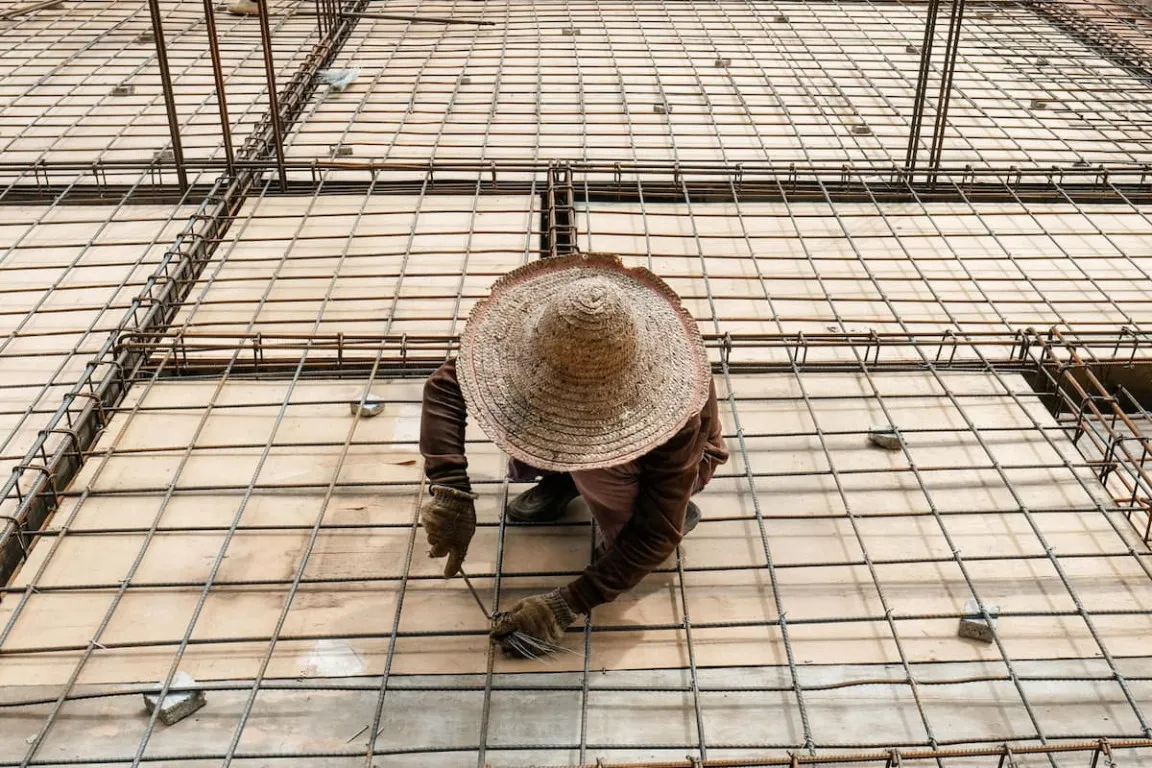The foundation is the main support for the building to stand firmly, and the ground beam is responsible for the stability and strength of the building. If the ground beam in the foundation is not made carefully, it can risk significant damage in the future.
Therefore, in making a foundation, it is important to understand ground beam formwork techniques so that the foundation you build can stand firm and last for a long time. Let's take a look at the following article to discover new facts about ground beam formwork.
What Is Ground Beam Formwork?
Ground beam formwork is a building structure that has a horizontal shape or extends to the side, also it is installed between the river stone foundation and the wall. The main function of ground beam formwork is to withstand the load imposed by the wall, which is channeled to the foundation and columns. Therefore, the existence of ground beam formwork is very important.
Ground beam formwork is also known as a system used in forming and supporting the weight of concrete when the ground beam is in the casting process. Ground beam is a beam that connects the building pillars with the foundation.
Generally, ground beam formwork is constructed from wood or iron, often combined with other composite materials that are strong enough to support the weight of the poured concrete.
Read also: Estimated Concrete Casting Cost Per Meter, Check the Simulation!
How to Calculate Ground Beam Formwork
As its function is quite crucial in maintaining the solidity of the foundation, the calculations carried out in making ground beam formwork must be accurate. Before starting to calculate the volume of the ground beam formwork, make sure you know the length and height of the upright side of the ground beam.
Here is the ground beam formwork volume formula that you can use:
2 x length x height
For example, a ground beam formwork has a length of 27 m2 and a height of 0.2 m. Then, the calculation is:
2 x 27 x 0.2 = 10.8 m2
So, the volume of the ground beam formwork is 10.2 m2.
Factors Affecting the Size of Ground Beam Formwork
The size of ground beam formwork varies greatly depending on the specifications and design required in construction. Several factors may affect the size of the ground beam formwork, including:
- Ground beam dimensions: The size of the ground beam formwork must be adjusted to the dimensions of the ground beam. This is essential because the beam will be cast according to these dimensions, so the width, height, and length must align precisely.
- Formwork material: Formwork manufacturing materials can also affect the size of the ground beam formwork, such as the thickness of wood or iron.
- Construction design: Construction design is also one of the factors that affect the size, number, and shape of the required ground beam formwork.
Read also: A Guide to Building Construction Services & Their Fields
Advantages of Ground Beam Formwork
Ground beam formwork offers several advantages that are important to know. These benefits are also the reason why formwork is widely used across various types of construction. Here are the advantages:
- Has maximum durability: Ground beam formwork has maximum resistance to accommodate the load of the casted concrete. This causes the ground beam formwork to provide a precise shape to the ground beam.
- Easy to install: Generally, ground beam formwork can be installed by adjusting to construction needs, which is more efficient and can speed up the construction process.
- Supports the implementation of work safety: Formwork provides more solid support during casting, which can help minimize the risk of work accidents.
- Provides quality results: In addition to being customizable to the construction needs, ground beam formwork can also produce quality concrete.
Techniques of Making Ground Beam Formwork
There are two techniques that you can apply in making ground beam formwork. The first is a direct sitting ground beam and a hanging ground beam.
However, before learning the manufacturing methods and techniques, you need to understand how to make the process more optimal. One key step is ensuring the use of quality materials, such as selecting strong boards or plywood.
After ensuring that the materials used are appropriate, here are the methods and technical steps for constructing ground beam formwork:
1. Ground Beam Installed Sitting on the Ground
The first method of making ground beam formwork is a ground beam that is installed sitting on the ground. Ground beam can be installed by assembling the ground beam iron directly on the ground. After the ground beam iron has been assembled, the ground beam formwork boards or triplexes can be installed upright on both outer sides.
When installing the ground beam formwork boards or triplexes, make sure to leave a 2.5–3 cm space for the concrete blanket. Afterward, cover the boards with wooden scores to prevent them from breaking or being damaged during the casting process.
The ground beam formwork can also be installed before the ground beam reinforcing iron. However, it must also be reinforced with wooden scores and given a certain distance to avoid damage during the casting process.
2. Hanging Mounted Ground Beam
The second technique of installing ground beam formwork is by hanging it. This hanging method is typically applied if the planned ground beam footprint conditions are higher than ground level.
To apply this technique, you may begin by placing a board or plywood at the bottom of the ground beam, then supporting it from underneath to prevent sagging. Once it is secured, attach boards to both sides of the beam, reinforcing them with wooden braces where additional support is needed.
Of the two ground beam formwork techniques mentioned above, it is important to check the position and level of the formwork at the end of the process to ensure they align with the design. This way, you can avoid the need for repairs after the concrete has been cast.
Some also suggest applying formwork oil in the process of removing the boards or triplex. This method aims to make the formwork easy to remove after the concrete dries.
That is the explanation of ground beam formwork, from the definition, how to calculate the volume, advantages, and installation methods.
After ensuring that the ground beam formwork is firmly installed, the next step is casting. To ensure the quality and efficiency of your building construction, Ready Mix Concrete from Beton Merah Putih is the right solution.
Ready Mix Concrete from Beton Merah Putih is a mixture of concrete that has been produced in batching plants with proportions of ingredients that have been adjusted according to project specifications.
One of the other excellent products of Semen Merah Putih to complement the use of Ready Mix Concrete is Semen Merah Putih FLEXIPLUS. Semen Merah Putih FLEXIPLUS has achieved Green Label Indonesia (GLI) certification with a Gold rating.
This is the highest rating given by the Green Product Council Indonesia (GPCI) to products that have met environmentally friendly standards.
Semen Merah Putih FLEXIPLUS is a hydraulic cement product specially developed for structural applications that require high compressive strength concrete and improved workability, making it suitable for ready-mixed concrete products, precast concrete, and the production of lightweight bricks or Autoclaved Aerated Concrete (AAC).
With a variety of superior products that follow technological developments, Semen Merah Putih is committed to providing the best construction solutions. Contact us to get more information about Semen Merah Putih products and get the best solution for your construction project!
Read also: 11 Types of Cement and the Functions in the Construction



